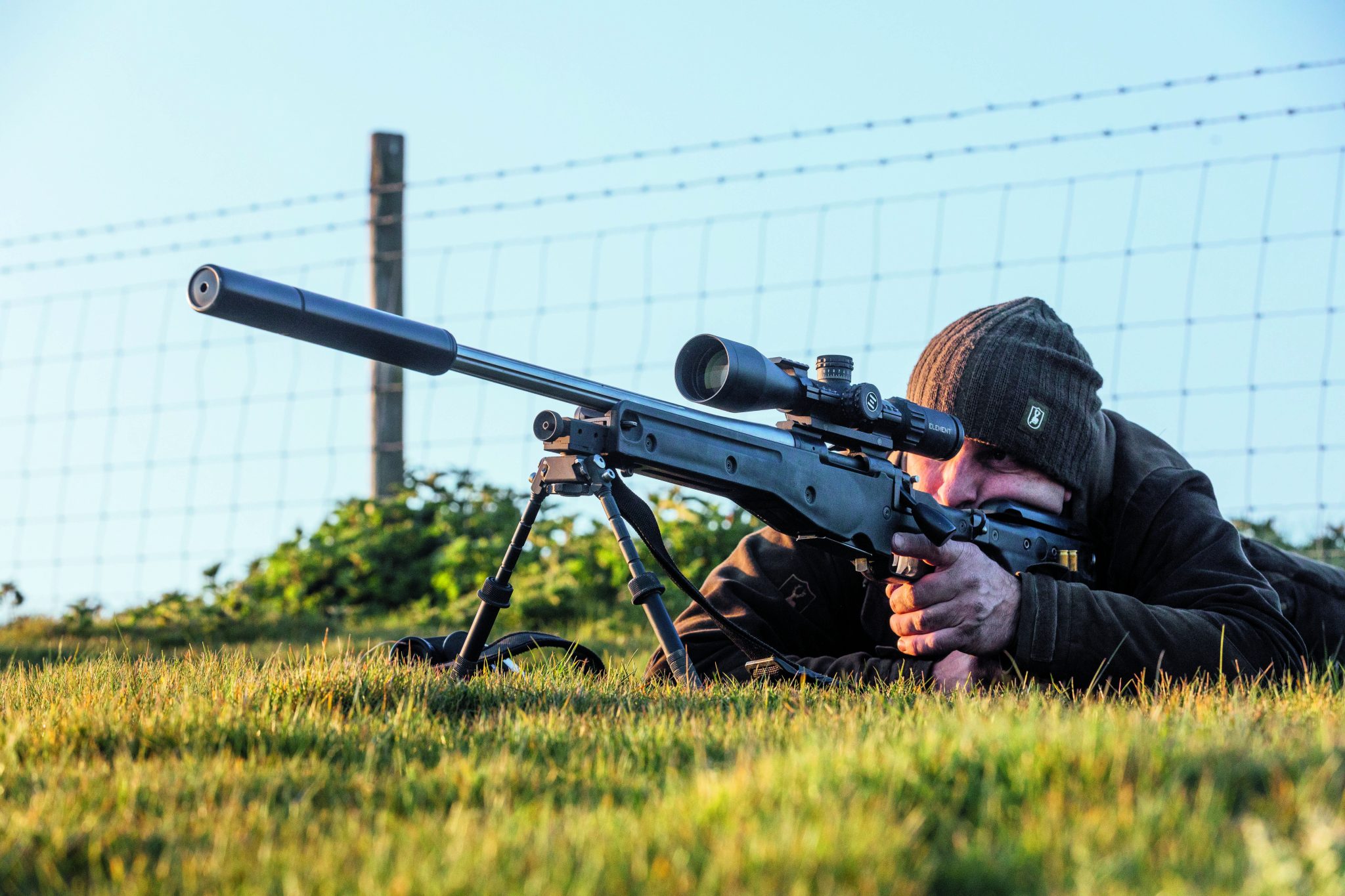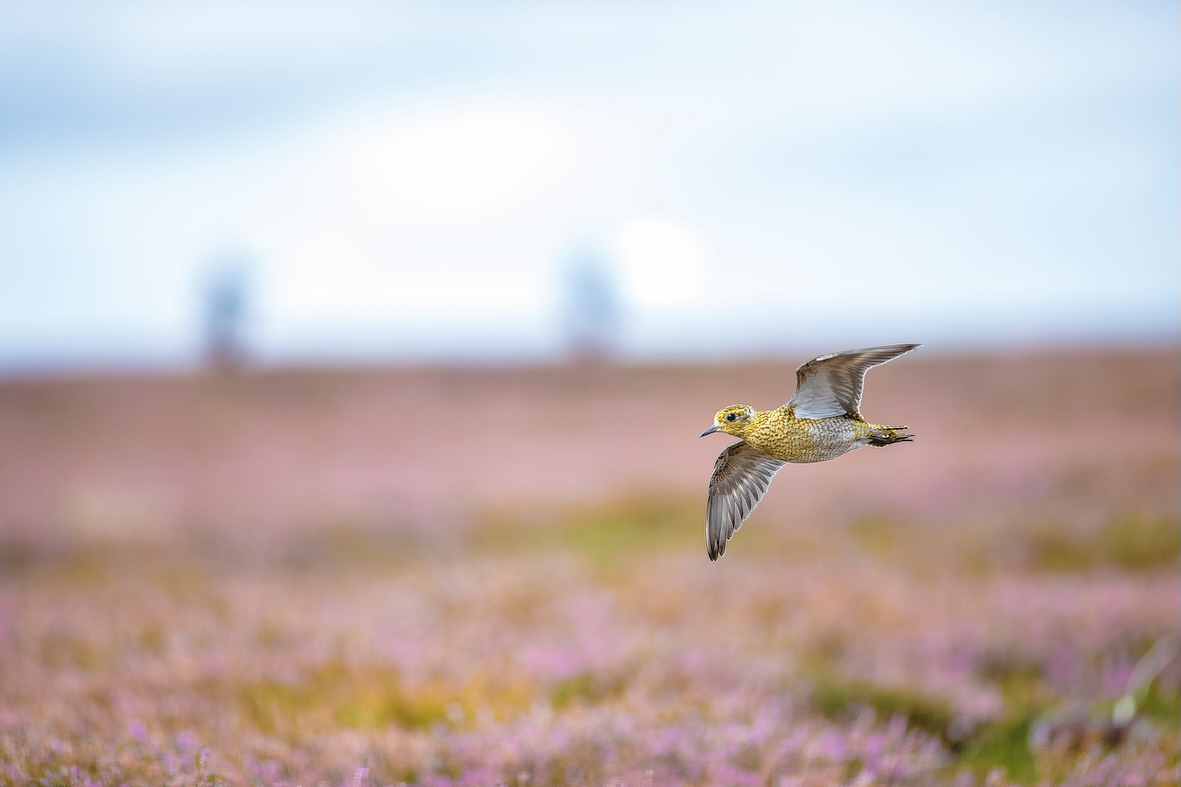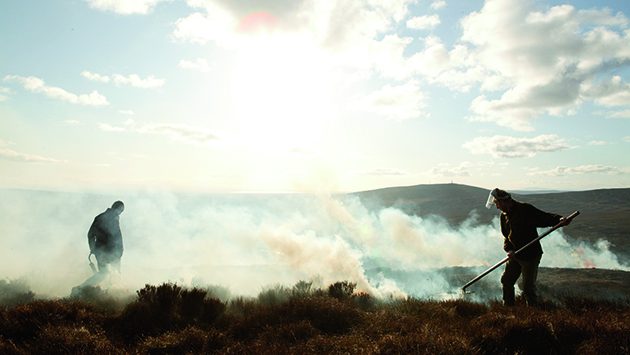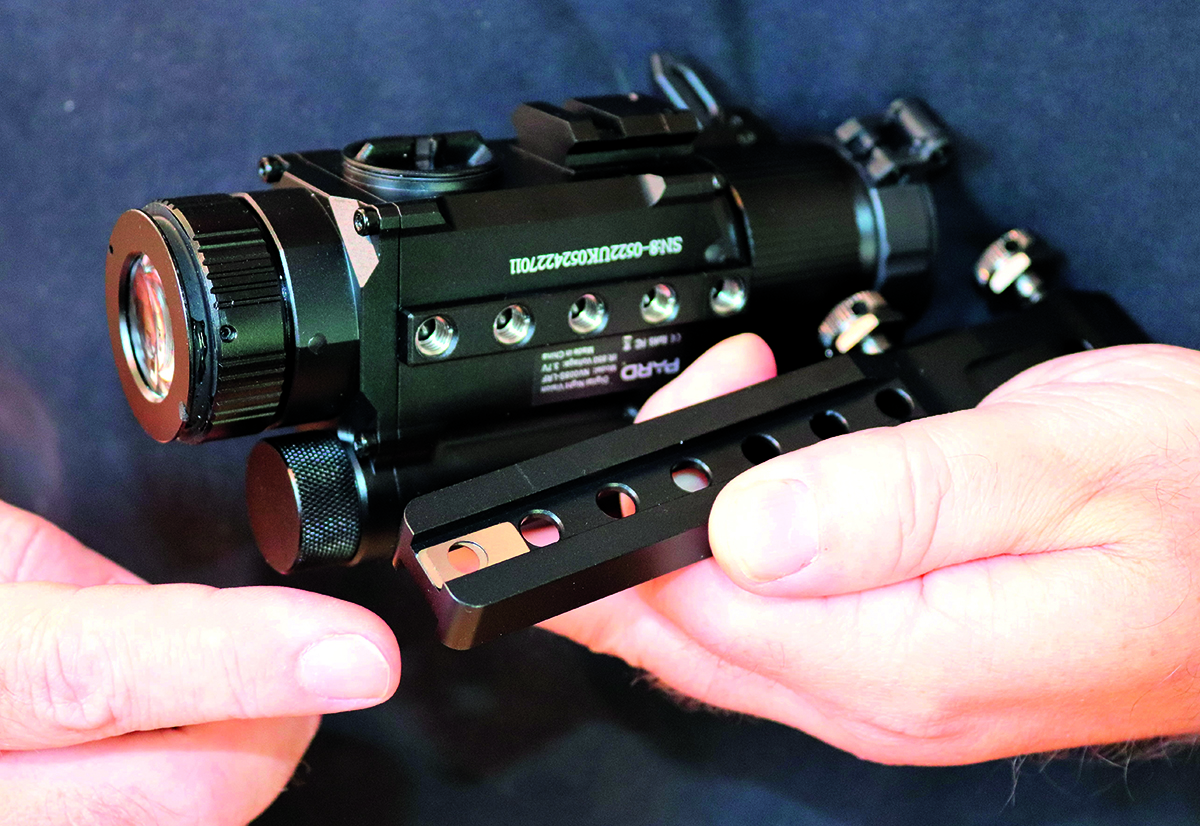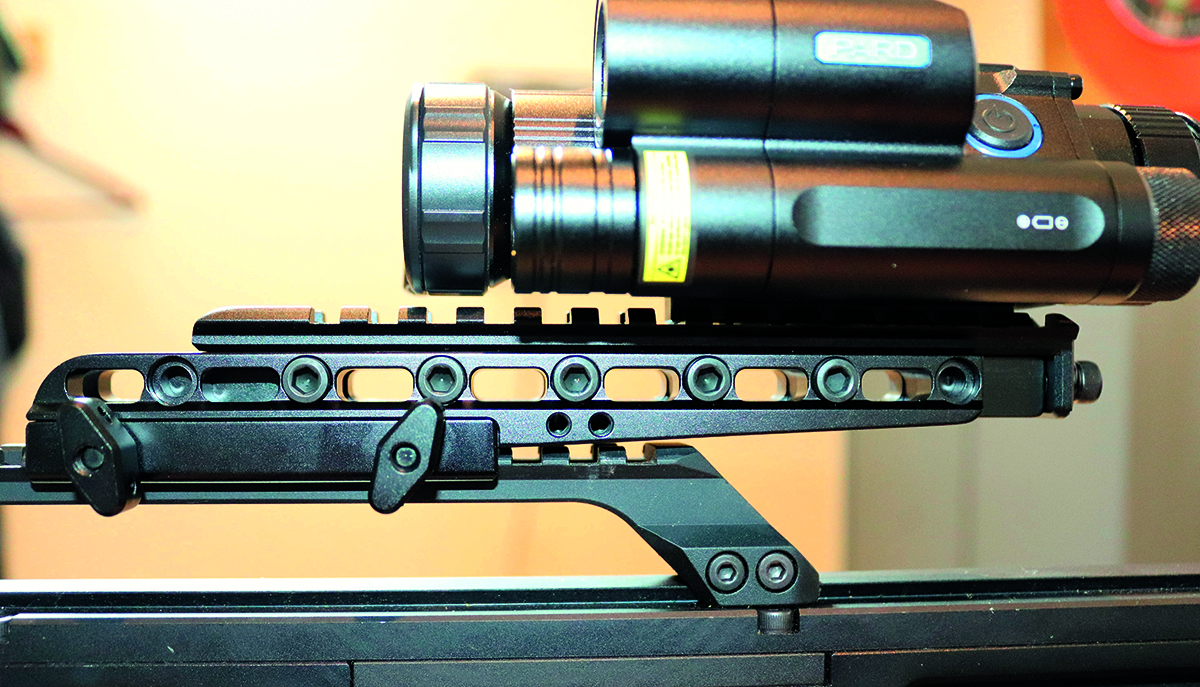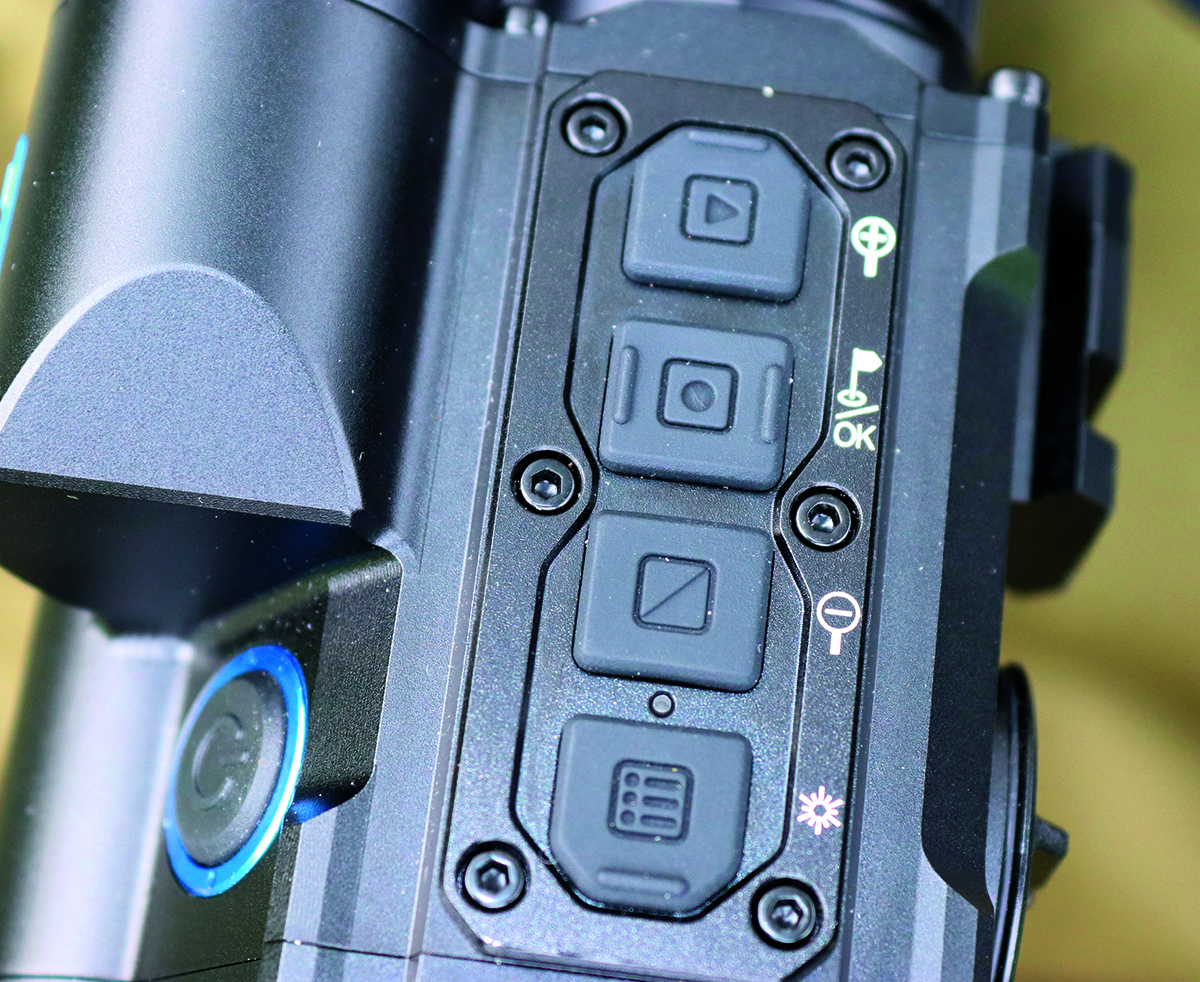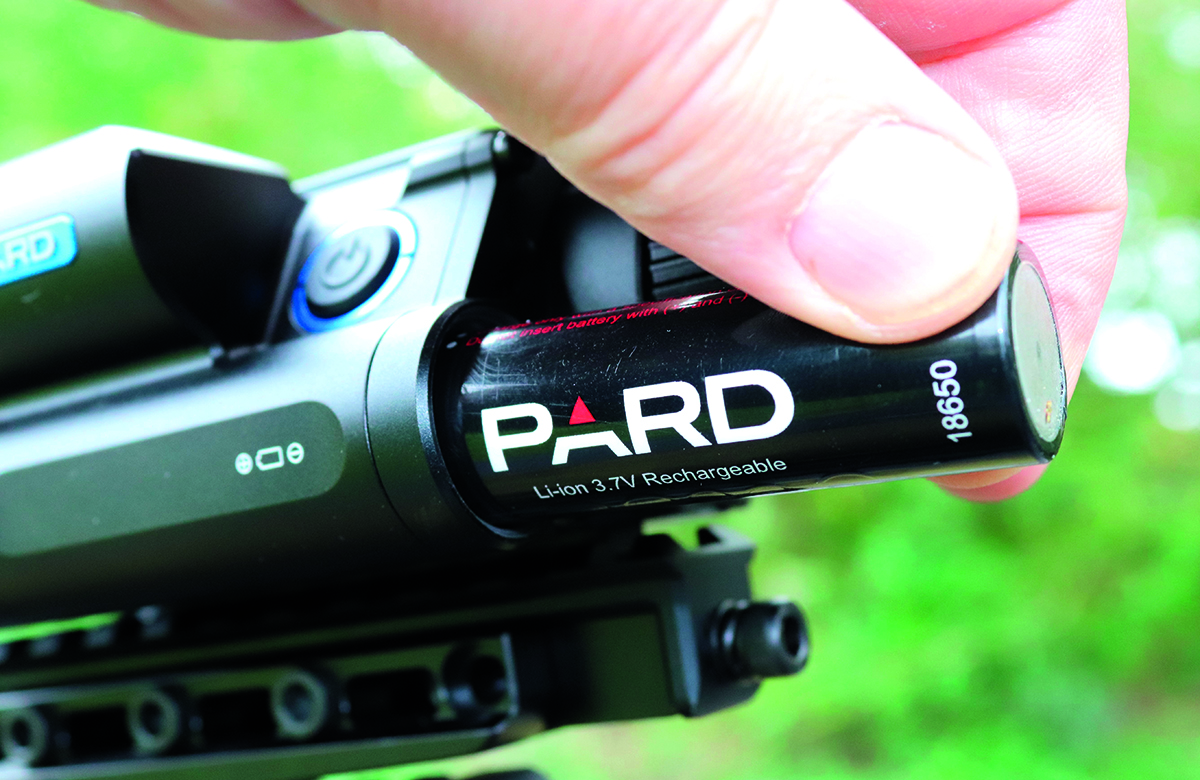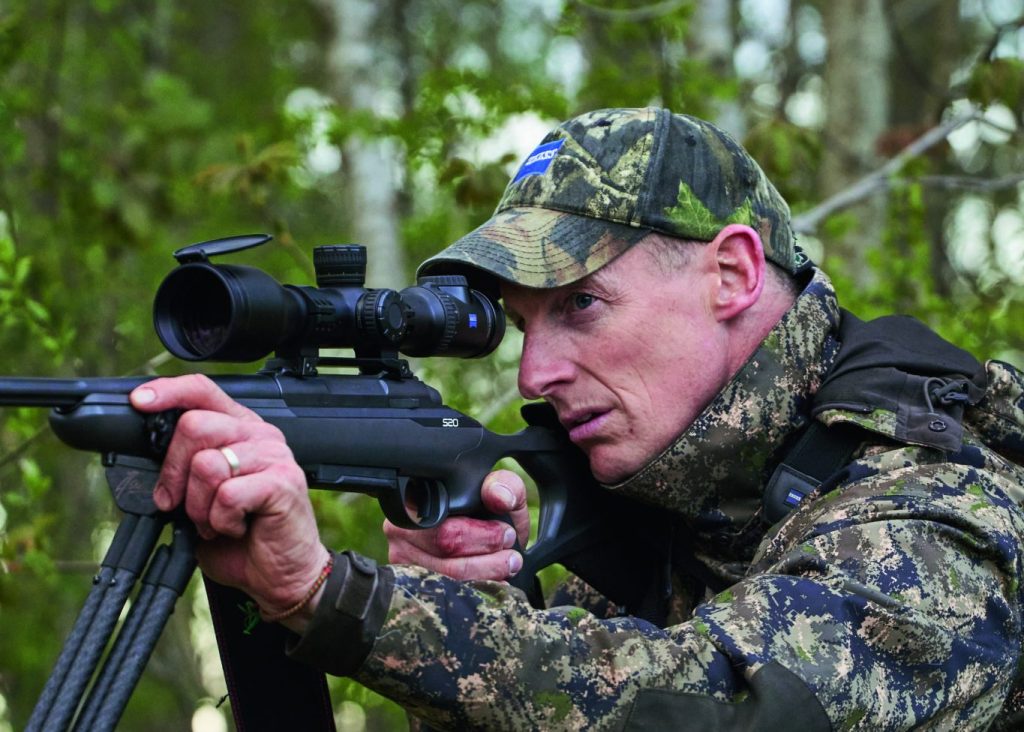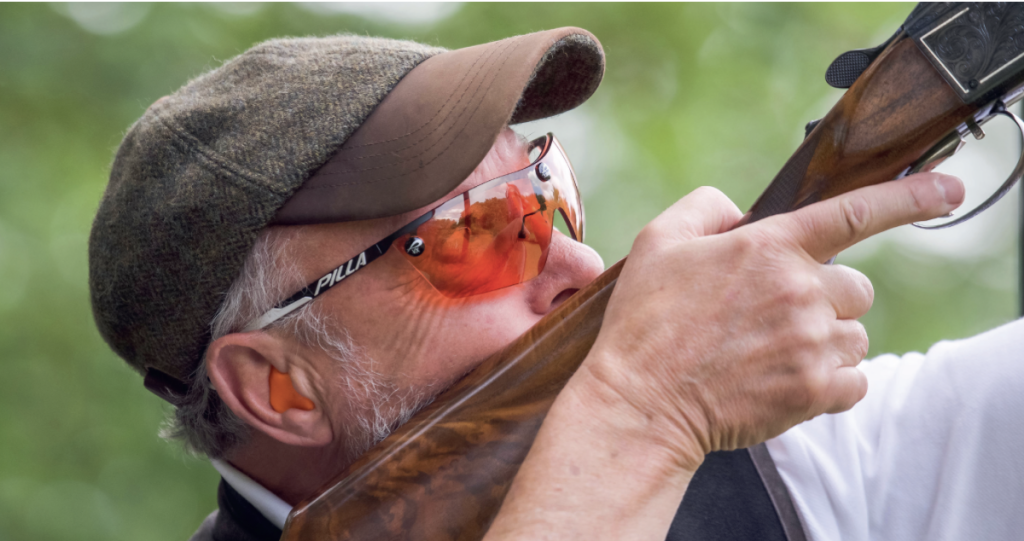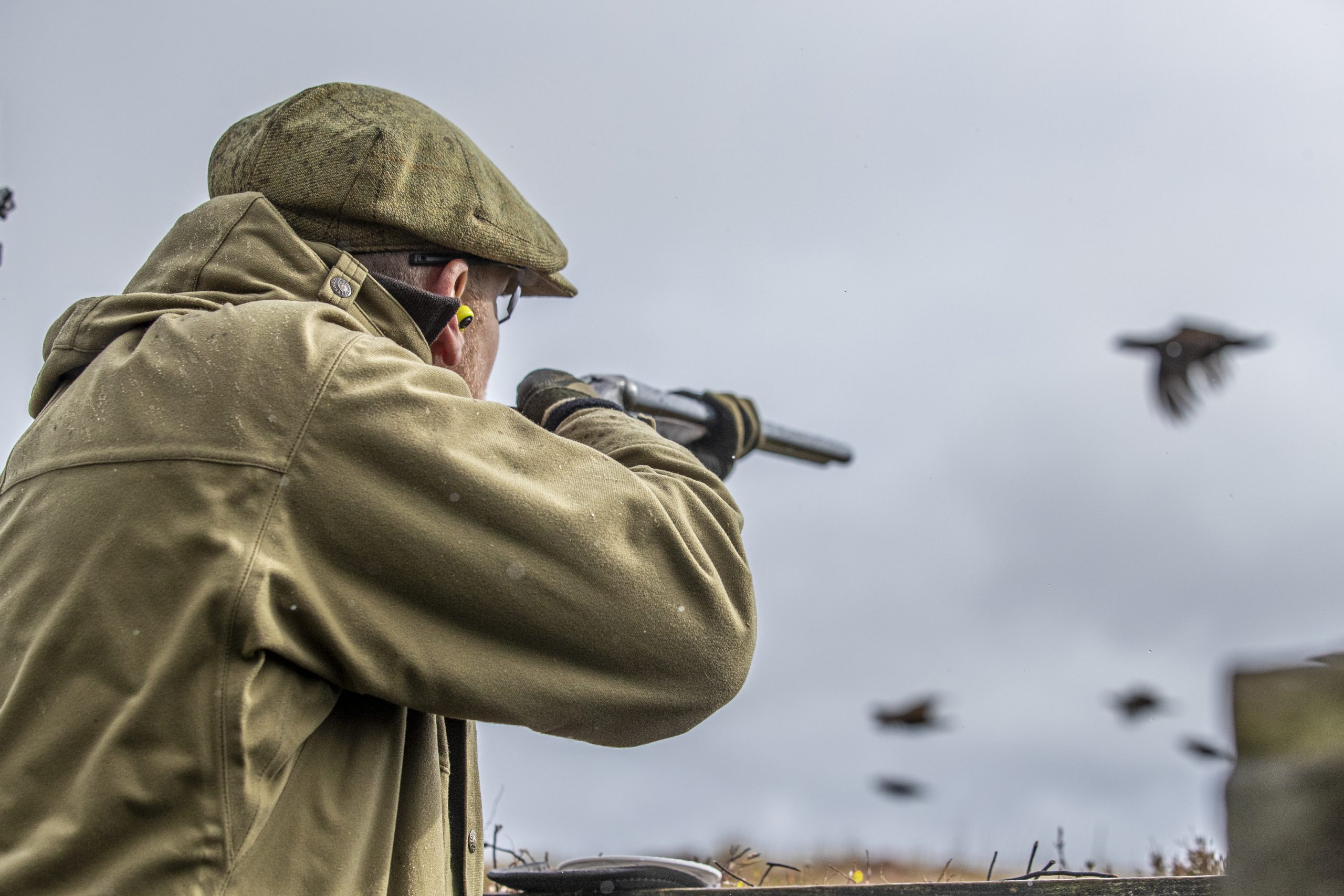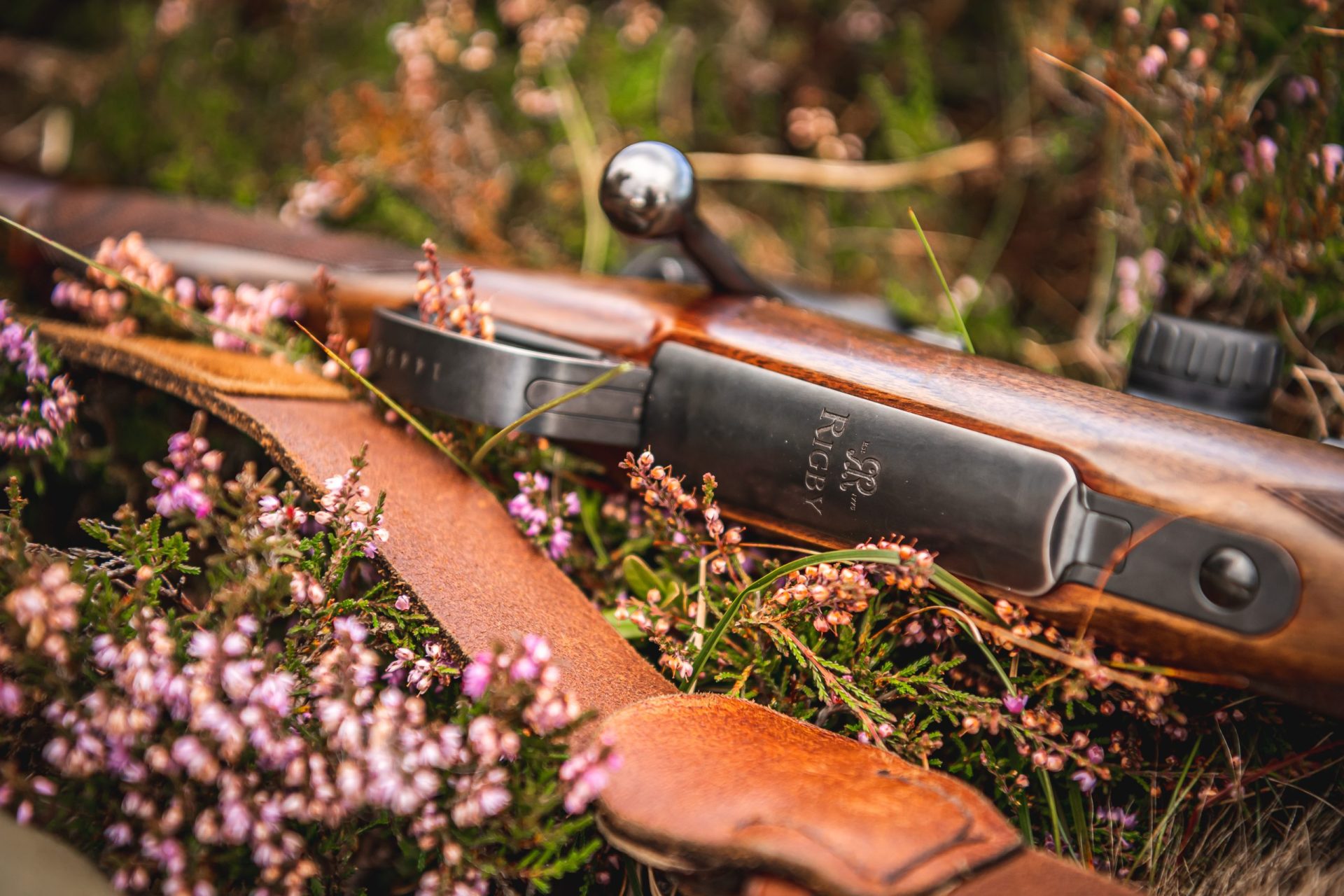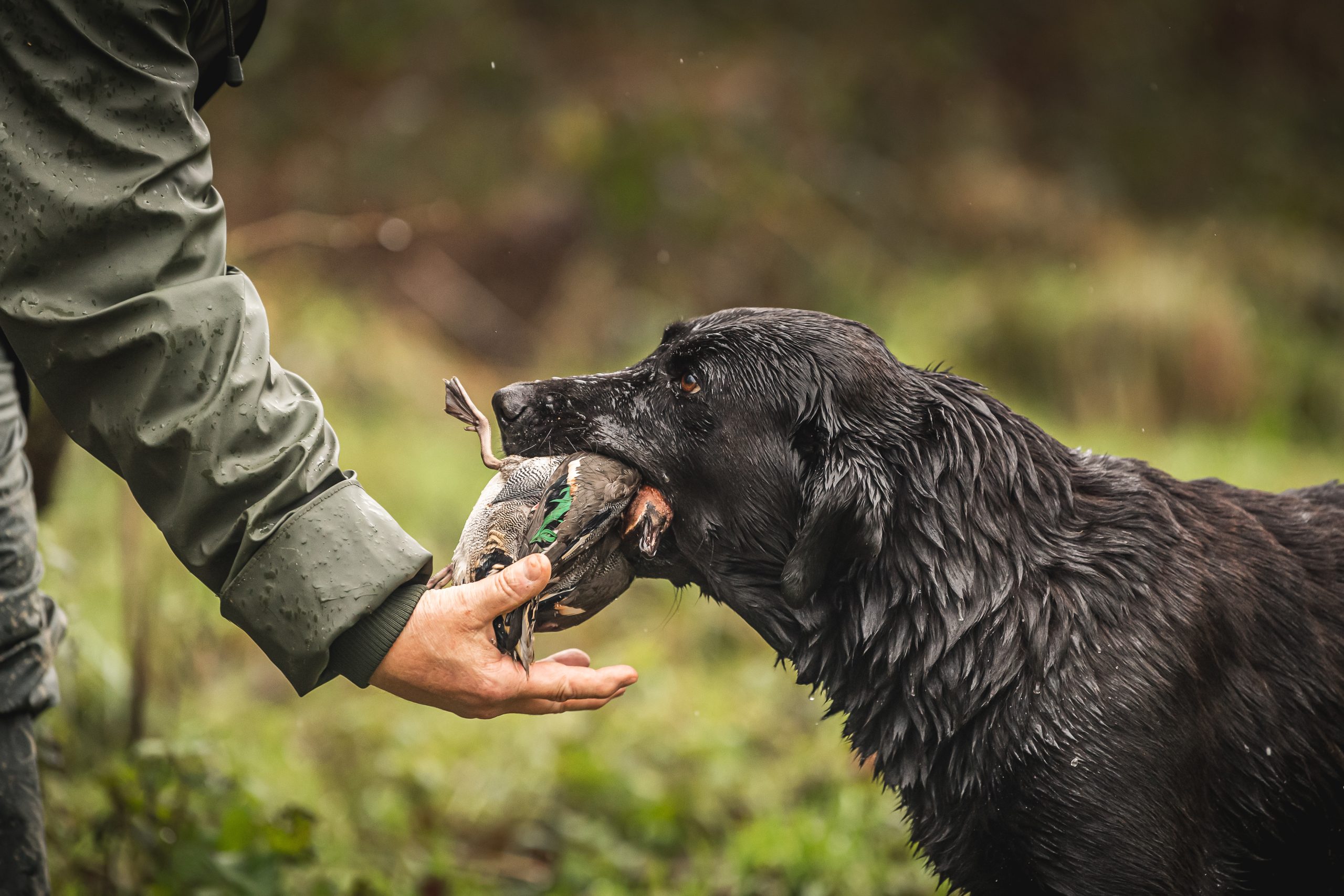Shooting
Field testing the Pard NV008S LRF
Would you like to speak to our readers? We offer sponsored articles and advertising to put you in front of our audience. Find out more.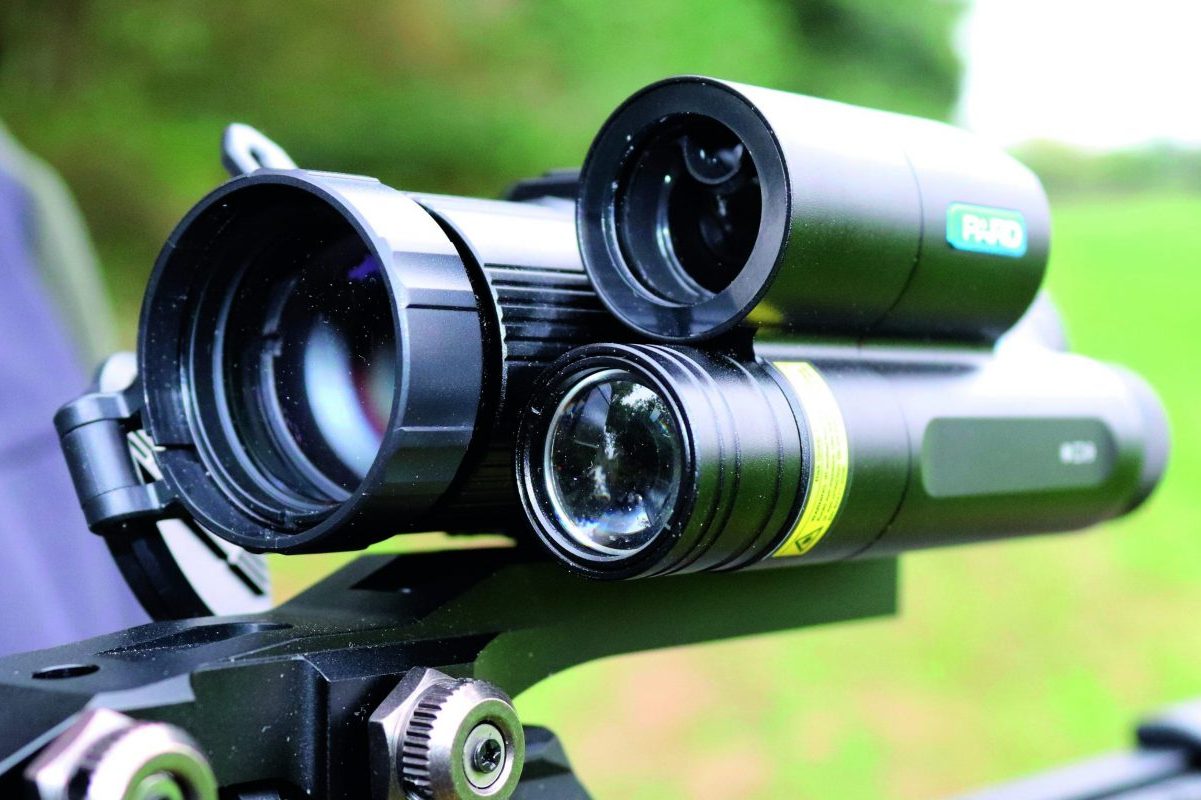
It’s really nice to be wanted, isn’t it? Well, perhaps not if you’re a criminal on the run I’d imagine, but speaking as an airgun shooter, being someone who’s in demand from one of your permission owners is very gratifying.
One of my smaller permissions is also one of my best. In fact, if Doctor Who had a permission it would be Poplar Farm in south Buckinghamshire. You see, it’s a TARDIS of a thing, tiny as farms go – more of a small holding – but thanks to a diverse collection of livestock, it attracts more than its fair share of rats, rabbits and feral pigeons.
Usually, the farmer calls me up because he’s seen an increase in a particular pest. I tool up accordingly and off I go. This time was a little different. “When are you going to get your bottom round here?” he enquired, but with a little more colour.
“Flip me, but there’s a jolly old lot of flipping rats all over the flipping pig pens. Pesky rabbits are eating all the grass and there’s pigeon excrement over everything in the barn.” Again, substitute words from the common vernacular.
Selecting my setup
Now, this gave me a bit of a problem. I knew from plenty of previous trips that the rats would be anywhere from 10 to 15 metres away, the feral pigeons would be a little closer and the rabbits would require shots out to 35m.
Of course, individually all those scenarios are ideal for air rifle pest control, but put them together and the variation in distances in the dark would make range estimation for holdover and under a little trickier.
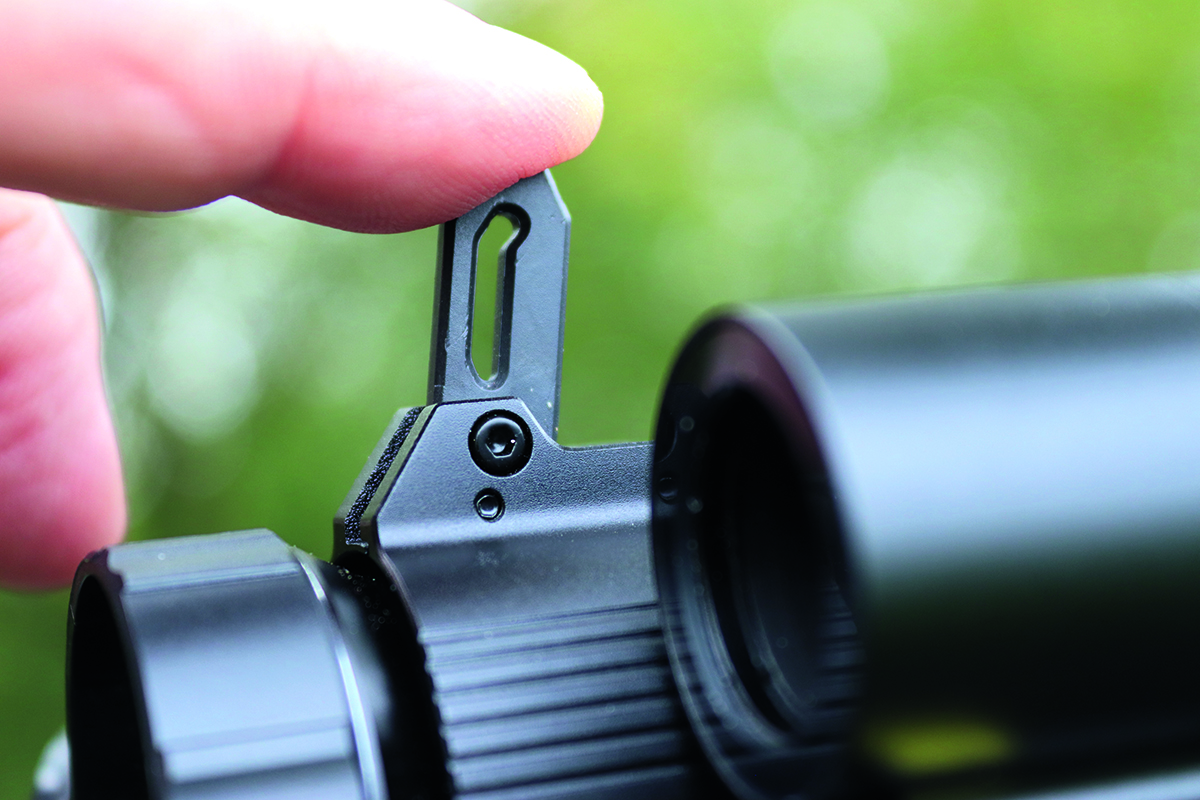
A flip-up lever makes using the focus collar much easier, enabling you to sharpen the image by day and by night
Then there was the choice of air rifle, or more specifically, calibre. When it comes to rabbits and FAC power is out of the question, I prefer to use .177 zeroed at 30m as I know the aim point is the same at 20m and I need just one mildot of holdover at 40m.
However, at the shorter distances I knew I’d be tackling the rats and ferals over, a .177 rifle would demand varying amounts of holdover, which in the hurly-burly of night-time shooting would be an unnecessary complication.
The alternative was a .22 rifle. Zeroed at 20m I knew I’d be able to tackle targets as close as nine or 10m away by aiming on. But the holdover conundrum would be re-introduced when it came to dealing with rabbits further away.
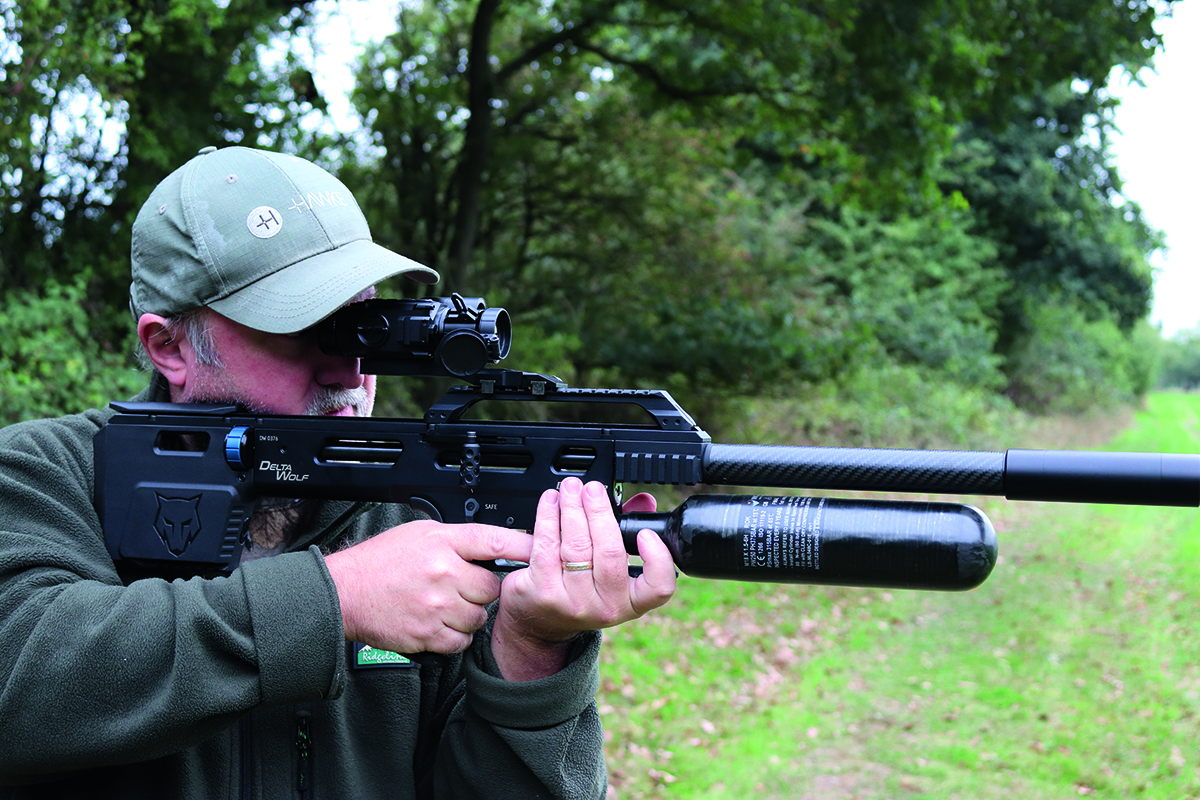
Despite all its digital gadgets and features, the Pard NV008S LRF is considerably smaller than a conventional optic
The right tools for the job
It’s hardly on a par with solving world hunger or establishing peace in Ukraine, but it was still a puzzle that needed solving. Fortunately my salvation came in the form of Sportsman Gun Centre, which sent me a Pard NV008S LRF to review. As a fan of the old version, which I’ve been using on a FAC .30 FX Impact MkII for several years, I was eager to try it out.
Like its predecessor, the S model is available with and without a laser rangefinder. (Click here for our list of best rangefinders)
The price difference is a little over £250 and in my opinion, the rangefinder function is a must-have and worth the additional outlay.
The NV008S LRF also has a new party trick. The addition of a ballistic calculator means that having read the distance to your target, the scope will automatically adjust the aimpoint. Hey presto, no more mental gymnastics trying to work out holdover and under in the heat of the moment.
You may need to use a pair of shims that fit between the scope and the rear of the mount to help centre the reticle in the NV008S LRF’s screen
Alternatively, as an additional purchase, you can use an adjustable mount made specifically for the NV008S like this one from Eagle Vision
The buttons are easy to locate in the dark and operate all the functions you’ll use most often, including rangefinding and the ballistic calculator
I decided to fit the scope to my 12 ft-lb .22 calibre Daystate Delta Wolf as the adjustable Picatinny scope rail would help me get perfect eye relief. (Read our review for the Daystate Delta Wolf .177)
The NV008S LRF is supplied with a couple of shims that fit at the rear between the scope and the mount and make it easier to achieve zero with the reticle in the middle of the screen.
Like the permission I’d be using it on, the Pard packs an awful lot into a small package. At a mere 445g and only 182mm long, in addition to the onboard laser rangefinder it also has an integrated 850nm infrared (IR) illuminator, the beam for which can be adjusted both for brightness and intensity. What’s more, at the press of a button you can choose either 6.5 or 13x magnification, use a picture-in-picture mode, swap reticle style and colour, and save video or take photos.
But what I was really interested in was the ballistic calculator.
The Pard’s menu is easily accessed and navigated. Having opened the calculator sub-menu, I entered data including pellet velocity (so you’ll need a chronograph) and its weight in grains. The ballistic coefficient for the Air Arms Diabolo Field pellets I’d be using was discovered with a little internet research. (Read here for our list of the best chronographs)
So too was the altitude above sea level and air temperature, though I have to assume such data was less vital for airgun use. More important was the range I wanted to set the zero for and the height from the centreline of the bore to the centreline of the optic.
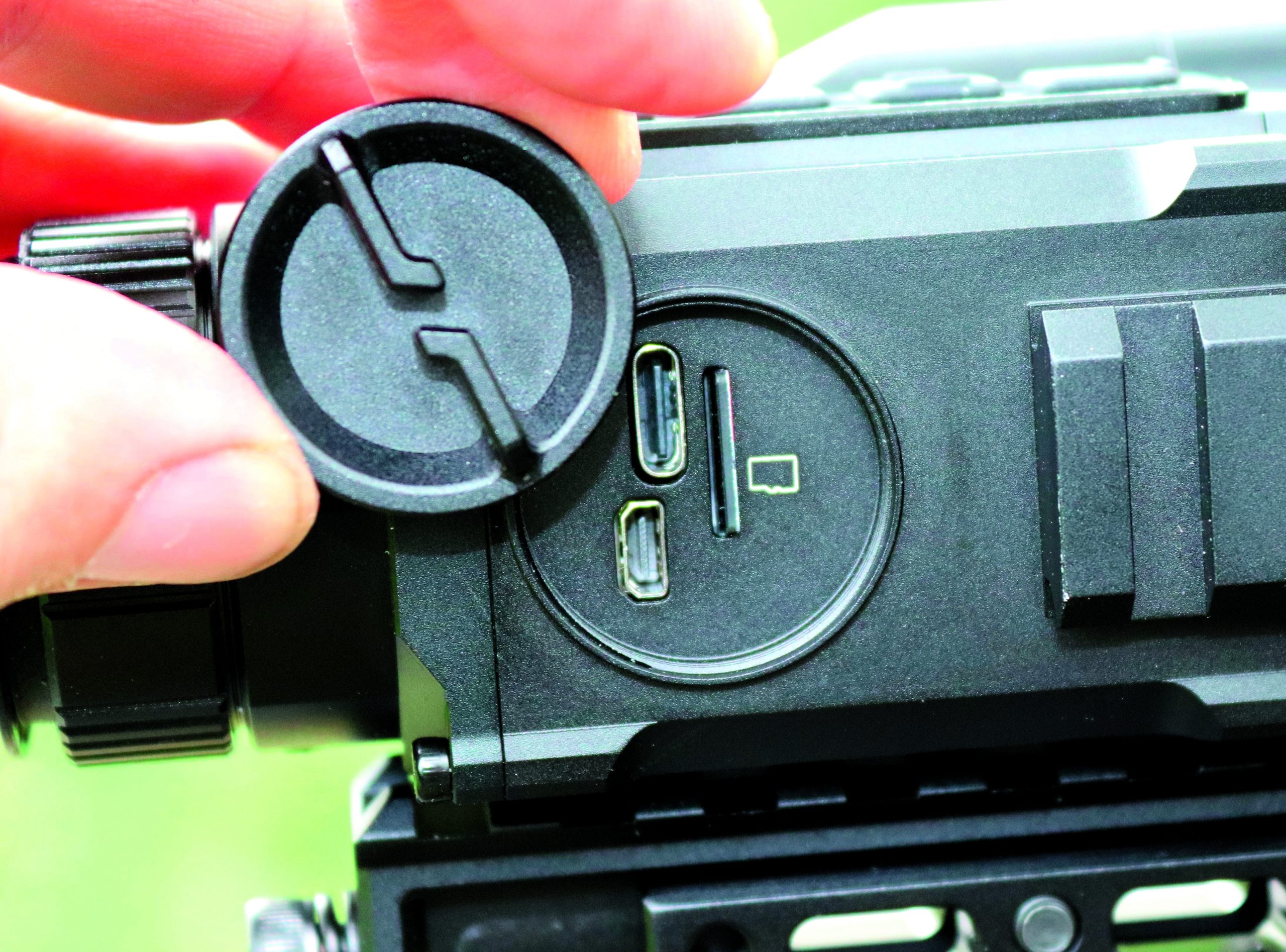
Unscrewing a cap reveals a couple of ports as well as access for a micro SD card
Starting the shoot
With that saved on one of the five profiles, it was time to nip down the range and see if all that black magic worked or whether it was a load of old ballistics. Well, to save a few words, let me tell you that it did, and mightily well.
Having zeroed in the usual way at 30m, I moved the target to just 10m. Activating the ballistic calculator is a simple case of pressing the second from the front button to activate the rangefinder, then a second time to bring up a cross on the reticle’s vertical axis to indicate a revised aim point.
And you know what, the pellet hit exactly where that little cross said it would. I even put five more through the same hole to make sure. I moved the target in 5m increments out to 40m with the same result.
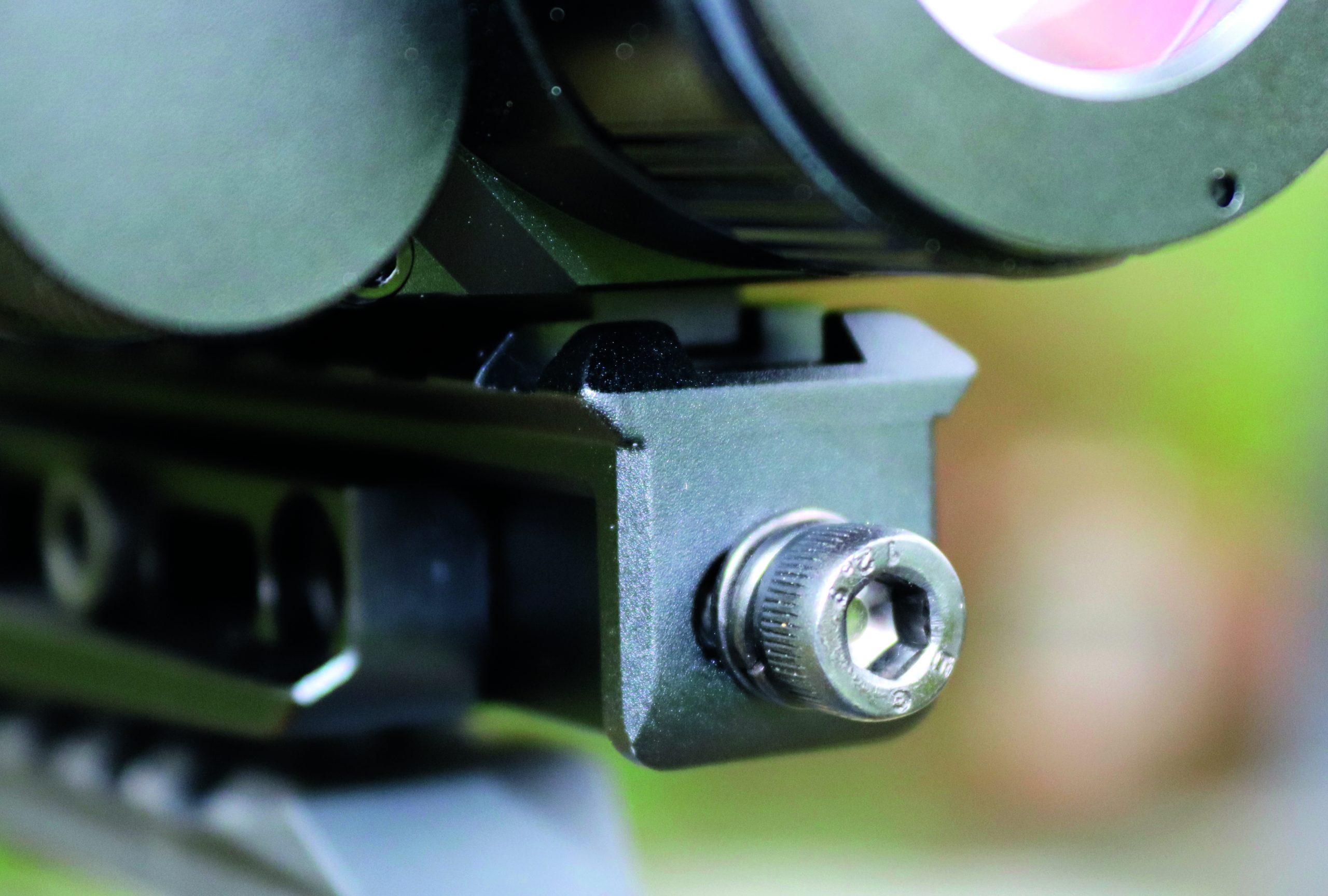
A screw at the back of the Eagle Vision mount allows you to make easy adjustments for windage
As you might imagine, I travelled to Poplar Farm later that evening full of confidence and, having claimed a brace of rabbits for the dinner table and filled up a bucket with a couple of dozen rats and a few feral pigeons, I have to say that the Pard NV008S LRF more than played its part.
Would I have shot them by relying on range guesswork and holdover/under? My over-inflated opinion of my shooting abilities says “yes”, but the inner voice of reality says “probably not”. The simple fact is that the ballistic calculator works – and works well.
Much more than that though, the Pard NV008S LRF is designed in such a way that using it, even in the dark, is quick and simple. Its controls are easy to locate and operate, and there are no unnecessary features and functions to get in the way.
The IR light is perfectly adequate for sub-12 airgun use, although an external torch will make things brighter still and save the Pard’s battery by not calling on it to power the onboard illuminator.
Plenty of other IR products have a rangefinder and ballistic calculator, but the Pard NV008S LRF ticks all the right boxes. It’s much lighter, more compact and easier to operate, and even an old technophobe like me has to admit that the ballistic calculator is a game-changer.
Related articles
Shooting
Shotgun
Let’s bite the bullet
The ban on lead shot for all game shooting is moving apace so it’s time to find the best eco-friendly ammunition that suits you and your rifle
By Time Well Spent
Shotgun
Shotgun buying guides
Starting out? Make sure it fits
If you’re buying your first clay gun, the right fit takes precedence – not good looks, the brand your mate’s got or even price – warns Paul Austin
By Time Well Spent
Manage Consent
To provide the best experiences, we use technologies like cookies to store and/or access device information. Consenting to these technologies will allow us to process data such as browsing behavior or unique IDs on this site. Not consenting or withdrawing consent, may adversely affect certain features and functions.
Functional Always active
The technical storage or access is strictly necessary for the legitimate purpose of enabling the use of a specific service explicitly requested by the subscriber or user, or for the sole purpose of carrying out the transmission of a communication over an electronic communications network.
Preferences
The technical storage or access is necessary for the legitimate purpose of storing preferences that are not requested by the subscriber or user.
Statistics
The technical storage or access that is used exclusively for statistical purposes.
The technical storage or access that is used exclusively for anonymous statistical purposes. Without a subpoena, voluntary compliance on the part of your Internet Service Provider, or additional records from a third party, information stored or retrieved for this purpose alone cannot usually be used to identify you.
Marketing
The technical storage or access is required to create user profiles to send advertising, or to track the user on a website or across several websites for similar marketing purposes.

